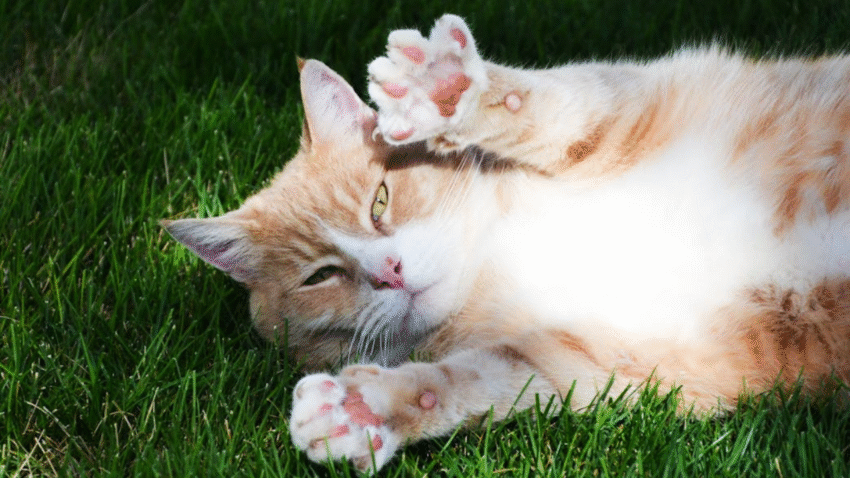Introduction
If you’ve ever watched your cat make eye contact as they slowly push a glass off the table, you’re not alone. While it might seem funny at first, constant knocking things over can lead to broken items and frustration. In this step-by-step guide, you’ll learn how to stop your cat from knocking things over by understanding the behavior and offering practical solutions that keep both your cat and your belongings safe.
Why Cats Knock Things Over
Cats don’t knock things over to annoy you—there’s usually a purpose behind it. Common reasons include:
- Curiosity: Cats use their paws to explore new objects.
- Attention-seeking: Knocking things down often gets a reaction.
- Boredom: Without enough stimulation, cats look for ways to entertain themselves.
- Instinct: Swatting is a natural hunting behavior—testing whether something is alive or edible.
Understanding the why is the first step toward creating better behavior.
Step-by-Step Guide to Discourage the Behavior
Step 1: Remove Temptations
- Declutter surfaces where your cat tends to roam—especially nightstands, countertops, and bookshelves.
- Store breakables out of reach or inside cabinets.
- Use museum gel or double-sided tape to temporarily secure important items in place.
Step 2: Offer Safe Alternatives
- Give your cat designated spaces to explore such as shelves, window perches, or cat trees.
- Provide toys that encourage pawing, such as:
- Puzzle feeders
- Hanging toys
- Feather wands
- Interactive ball tracks
These options let your cat satisfy their instincts without damaging your home.
Step 3: Increase Mental and Physical Stimulation
- A bored cat is more likely to engage in mischief. Keep your cat busy with:
- Daily play sessions (at least 15–20 minutes)
- Rotating toys every few days
- Hiding treats around the house for foraging
- Consider using cat TV or bird videos on a tablet or screen for visual enrichment.
Step 4: Don’t Reinforce the Behavior
- If your cat knocks something over and gets attention (even negative), they may do it again.
- Avoid yelling, chasing, or giving them treats or food immediately afterward.
- Instead, calmly remove the object, ignore the behavior, and redirect your cat to a toy or scratching post.
Step 5: Train Using Positive Reinforcement
- Use clicker training to reinforce calm or curious behavior near objects.
- When your cat sniffs or approaches an item without knocking it over, reward them with a treat or praise.
- Over time, they’ll associate good behavior with positive outcomes.
Step 6: Make the Surfaces Unpleasant
- Cats dislike certain textures and sounds. You can make your furniture less appealing by:
- Placing double-sided tape, crinkled aluminum foil, or plastic mats temporarily on surfaces they target.
- Using motion-activated deterrents like air puffers or sound alarms near specific spots.
These methods should be safe and temporary—enough to discourage, not frighten.
Common Mistakes to Avoid
1. Assuming Your Cat Is Just Being Naughty
This behavior usually has a root cause. Blaming the cat without addressing boredom or curiosity won’t stop the problem.
2. Punishing Your Cat
Yelling or spraying your cat with water may increase stress and damage your bond. Focus on redirection, not punishment.
3. Leaving Tempting Items Out
Vases, pens, food wrappers, and jewelry are all enticing to cats. Don’t expect your cat to resist if it’s within reach.
4. Inconsistent Responses
If you sometimes laugh and other times get angry, your cat gets mixed messages. Always use the same approach: redirect calmly and reward positive behavior.
5. Ignoring Underlying Issues
Sudden changes in behavior may signal stress, illness, or environmental changes. If your cat starts knocking things over more often, consult your vet.
Extra Tips & Recommendations
Tip 1: Add Vertical Territory
Cats love height. Install wall-mounted shelves, hammocks, or tall scratching posts to give them safe places to climb without accessing fragile areas.
Tip 2: Make Meal and Play Times Predictable
Establish a routine. When cats know when they’ll be fed and played with, they’re less likely to act out for attention.
Tip 3: Use Cat-Safe Deterrent Sprays
Certain sprays contain harmless scents cats dislike. Spraying these near off-limits areas may discourage lingering or swatting.
Conclusion
Stopping your cat from knocking things over isn’t about control—it’s about understanding and redirecting their natural instincts. By offering safe alternatives, enriching their environment, and staying consistent, you’ll protect your home and improve your cat’s well-being. With patience and a few small adjustments, your cat will leave your shelves and countertops in peace.
